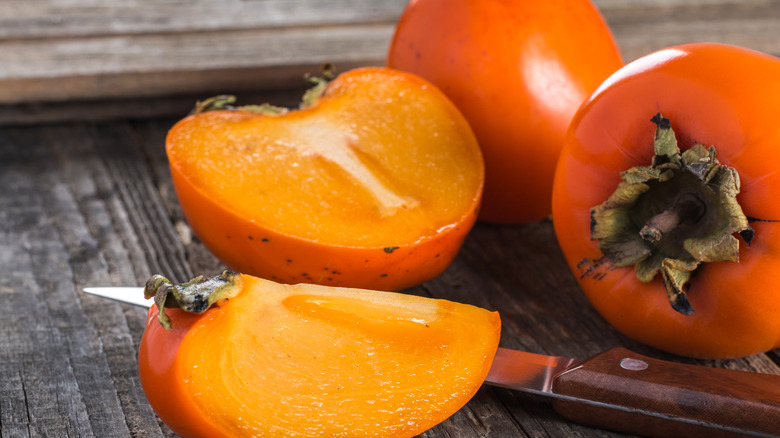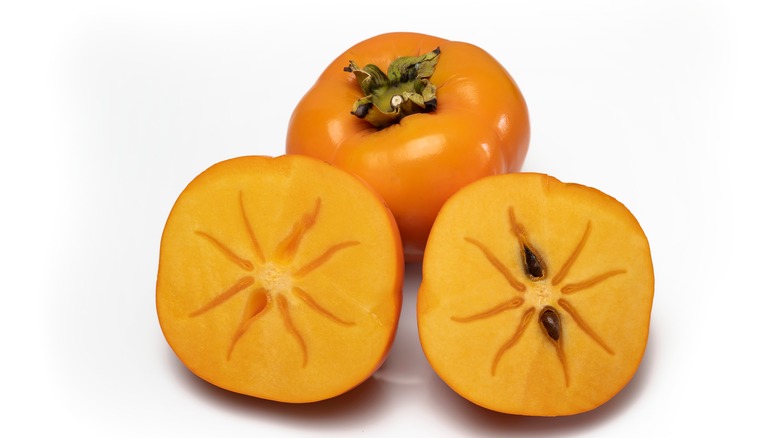Fuyu Vs. Hachiya Persimmons: The Crucial Flavor Difference
Persimmons are beautiful brightly colored fruits that ripen in the late fall and winter (via Serious Eats). The rich consistency and delicate sweet palate, not to mention the warm orange hue, make persimmons a great harbinger of fall in Asia, if not yet in the U.S. (per Eater). However, these appealing (though underappreciated) fruits have much to offer us.
For one, these juicy little babies are loaded with nutrients. One small persimmon packs several of your daily vitamin and mineral needs, including 55% vitamin A, 30% manganese, and 22% vitamin C, as well as 6 grams of fiber (per Healthline). Additionally, they're a good source of riboflavin (B2), thiamin (B1), folate, phosphorus, and magnesium, and contain a number of other vitamins and minerals in smaller amounts.
However, these brightly colored nutrient powerhouses don't all ripen the same way or at the same speed. While you may not need to know everything about persimmons, you'll want to learn a little more about their nuances before you go to the supermarket to stock up.
Persimmon varieties
On the most basic level, persimmon varieties can be broken down into two categories: astringent and non-astringent (per Serious Eats). Astringent persimmons are higher in tannins, which makes them unpalatable until they are extremely ripe, bordering on overripe. Non-astringent persimmons are easier for newbies to handle and are edible at all stages of ripeness.
The two varieties commonly sold in the U.S. are Hachiyas, a type of astringent persimmon, and Fuyus, a sweet and forgiving non-astringent variety. While both varieties can be amazing when ripe, you'll want to be extra careful around Hachiyas. The acorn-shaped fruits "feel like a water balloon filled with jelly" when ripe, according to Eater. At this point, the fruit may be difficult to cut, so you'll have an easier time using a spoon to scoop out the custardy pulp.
Non-astringent Fuyus are shaped like a beefsteak tomato and can be eaten when firm to the touch (per All Recipes). To eat, simply slice them up like you would a tomato or bite into them like an apple. The leaves are not edible, so remove those first. Either variety will serve you well for a persimmon jam recipe, so long as you're sure they are ripe.

